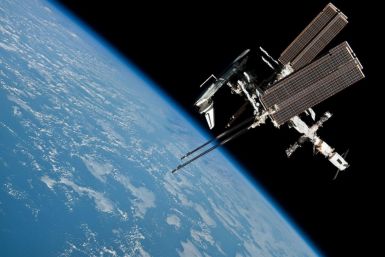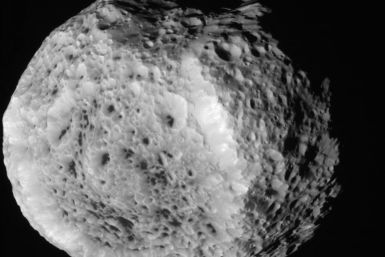NASA's researchers are investigating ways to implement a bioregenerative system in space that would allow astronauts to grow certain plants.
Russian space vehicles are currently the only means of transporting crews and supplies to the station now that the U.S. space shuttle program has ended. The U.S. space shuttle flew its last mission in July.
U.S. and Russian space agency officials are considering temporarily pulling astronauts off of the International Space Station, The Wall Street Journal reports Monday, following last week's failure of an unmanned cargo mission to the international space station.
NASA said that astronauts may need to abandon the International Space Station in the fall. The announcement was prompted by Russian Soyuz rockets, which will be grounded until well into November. NASA said that it will be impossible to send new crews into space after current crews leave.
Astronauts traveling to the Red Planet to script the first manned mission to Mars may have to grow their own food on the spacecraft.
NASA scientists, using data from the Wide-field Infrared Survey Explorer (WISE), have discovered the coldest class of star-like bodies, with temperatures as cool as the human body.
Scientists provided new insights into a cosmic accident that has been streaming X-rays toward Earth since March. Two studies appearing in the Aug. 25 issue of the journal Nature revealed the information about the accident.
Hurricane Irene, the first of the 2011 season, is on a destructive path along the East Coast. Irene took three lives in North Carolina and one in Virginia. Additionally, the Category 1 hurricane has effectively closed down New York, the nation's largest city. Irene is packing winds of about 90 miles per hour and is churning over North Carolina and Virginia.
NASA's Cassini spacecraft has captured new raw images of Saturn's oddly shaped moon, Hyperion, during its second closest encounter with the cratered body on Aug. 25, 2011.
Scientists have discovered a new river, which they claim is as long as the Amazon River and up to hundred times wider.
Hurricane Irene is pummeling its way up the U.S. East Coast and is expected to hit North Carolina early Saturday, then continue all the way up to New York City and even Canada.
Astronomers caught a giant black hole swallowing a star for the first time. NASA released an animation of the rare event on Wednesday showing how the black hole shredded and consumed the star.
The supernova enabled by a star collapsing 21 million light years away began Tuesday. We may be able to see the astronomical event using binoculars soon.
As the East Coast prepares for Hurricane Irene to strike this weekend, NASA satellites have captured Hurricane Irene's track since it began as a tropical storm far out in the Atlantic Ocean.
NASA scientists have managed to capture a distant galaxy's dormant black hole shredding and consuming a star.
As Irene moves in on North Carolina, NASA satellite photos shows its diameter is now about one-third the length of the whole U.S. Atlantic coastline.
A state of emergency has been declared in six states toward the U.S. East Coast after Hurricane Irene caused havoc in the Bahamas.
Astronomers have spotted the brightest supernova in 40 years in the Pinwheel Galaxy, which lies only about 21 million light years away from Earth and located in the famous constellation of the Great Bear (Ursa Major).
Gathering strength as she morphs into a major Category 4 storm, Hurricane Irene continues her assault threat on the East Coast. But even she can't slow preparations for NASA's upcoming launches from Florida's Space Coast, including a moon-studying mission slated to start Sept. 8, the space agency said.
Learn how to track the path of Hurricane Irene online as the Category 3 storm heads towards North Carolina and up the East Coast towards New York and New England.
As Hurricane Irene follows a path towards North Carolina and up the East Coast, here are some helpful Web sites, iPhone and iPad apps, and tips to keep you informed and prepared for the storm.
Russian spacecraft Progress 44 failed and crashed down to Earth in a resupply mission.






































